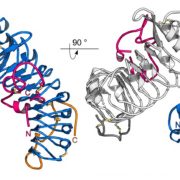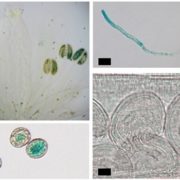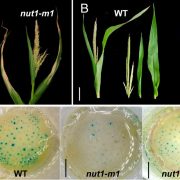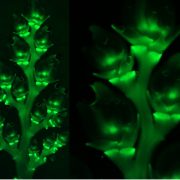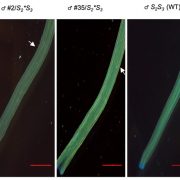UV bullseye contrast of Hemerocallis flowers attracts hawkmoths but not swallowtail butterflies (Ecology and Evolution)
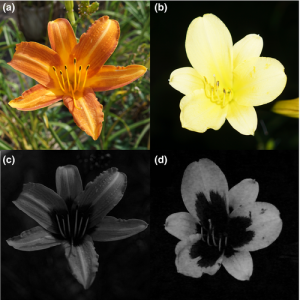 Floral color and patterning each play a role in filtering pollinator visits to any given flower. However, just as the color and patterning of flowers is multidimensional, so too should be our understanding of the relative importance of color-related traits in pollinator preference. Hirota et al. aimed to determine how floral color-related traits (human-visible color and UV bullseye contrast) differentially influence pollinator attraction in two Hemerocallis species: H. fulva, which is orange and butterfly pollinated, and H. citrina, which is yellow and hawkmoth pollinated. Both species have UV bullseye nectar guides, however the constrast of the UV reflecting periphery of the bullseye in H. citrina is significantly more intense than in the H. fulva. The authors planted an array of both species of flower in outdoor plots and conducted pollinator observations, after which the individual floral color and UV pattern of each flower visited was noted. Contrast was key in Hawkmoth preference; Hawkmoths observed during both day and night significantly preferred flowers with higher UV contrast but made little to no distinction between human-visible floral colors. Conversely, butterflies showed a clear preference for H. fulva-like floral color (human-visible orange), yet little to no preference regarding UV contrast. Hawkmoths and butterflies differ in their visual perceptions of color: both are able to see UV, however butterflies are much more adept at discriminating between human-visible colors. Hirota et al’s findings reveal a marked distinction in responses to visual floral cues between pollinators and the potential that differences in visual perception of pollinators could drive floral divergence. Understanding sensory perception of pollinators is integral in unraveling the mysteries of pollinator-driven floral evolution. (Summary by Rebecca Hayes) Ecology and Evolution 10.1002/ece3.4604
Floral color and patterning each play a role in filtering pollinator visits to any given flower. However, just as the color and patterning of flowers is multidimensional, so too should be our understanding of the relative importance of color-related traits in pollinator preference. Hirota et al. aimed to determine how floral color-related traits (human-visible color and UV bullseye contrast) differentially influence pollinator attraction in two Hemerocallis species: H. fulva, which is orange and butterfly pollinated, and H. citrina, which is yellow and hawkmoth pollinated. Both species have UV bullseye nectar guides, however the constrast of the UV reflecting periphery of the bullseye in H. citrina is significantly more intense than in the H. fulva. The authors planted an array of both species of flower in outdoor plots and conducted pollinator observations, after which the individual floral color and UV pattern of each flower visited was noted. Contrast was key in Hawkmoth preference; Hawkmoths observed during both day and night significantly preferred flowers with higher UV contrast but made little to no distinction between human-visible floral colors. Conversely, butterflies showed a clear preference for H. fulva-like floral color (human-visible orange), yet little to no preference regarding UV contrast. Hawkmoths and butterflies differ in their visual perceptions of color: both are able to see UV, however butterflies are much more adept at discriminating between human-visible colors. Hirota et al’s findings reveal a marked distinction in responses to visual floral cues between pollinators and the potential that differences in visual perception of pollinators could drive floral divergence. Understanding sensory perception of pollinators is integral in unraveling the mysteries of pollinator-driven floral evolution. (Summary by Rebecca Hayes) Ecology and Evolution 10.1002/ece3.4604


